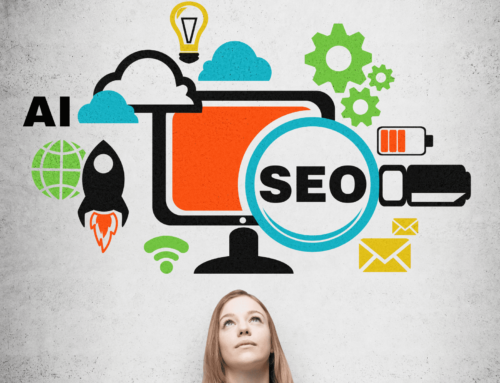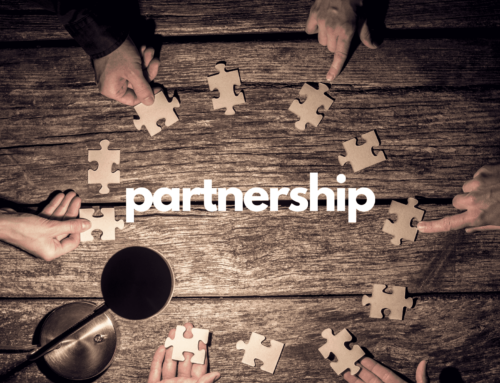Content marketing is an integral part of marketing strategies for businesses and organizations across the globe. According to the 2021 Hubspot State of Marketing Report, 82% of marketers use content marketing to drive brand visibility, engagement, and even revenue. In addition, it’s a cost-effective way for nonprofit organizations to communicate their message efficiently.
Continue reading to learn why your nonprofit organization should embrace content marketing and how you can leverage content to achieve your goals.
What Is Content Marketing?
“Content marketing is a strategic marketing approach focused on creating and distributing valuable, relevant, and consistent content to attract and retain a clearly-defined audience — and, ultimately, to drive profitable customer action,” as defined by the Content Marketing Institute.
The primary goal of content marketing is to build a long-term relationship with your audience and establish your organization as a thought leader and trusted source of information in your field. Content marketing doesn’t exclusively promote a brand but demonstrates your expertise organically. In other words, it’s not a sales pitch but an opportunity to showcase your knowledge and credibility.
Why is Content Marketing Important for Nonprofits?
1. Increases Awareness and Brand Reputation
Nonprofit organizations depend on the community’s goodwill to achieve their goals. Content marketing can raise awareness of your organization and clearly define its mission, goals, and impact. It can also help your organization build a positive reputation.
By developing and sharing engaging content, nonprofit organizations can reach people who may not have known about their work. According to a survey by Content Marketing Institute, 86% of nonprofit marketing professionals believe content marketing is an effective way to raise awareness for their organization.
2. Engages Supporters and Builds Community
Nonprofit organizations rely on the support of their donors, volunteers, and other stakeholders to achieve their goals. Content marketing can help engage supporters and build a community around the organization and its cause. Developing and sharing relevant and meaningful content can enable you to create a sense of belonging and foster a deeper connection with your supporters. As a result, you receive increased engagement, loyalty, and advocacy.
3. Educates and Inspires Action
Nonprofit organizations often work on complex issues that require education and awareness-building to inspire action. Informative and inspiring content can be a powerful tool to educate, inspire, and motivate your audience to get involved.
4. Improves Donor Retention
Nonprofit organizations can demonstrate the impact of donations and encourage continued support by sharing stories and updates about their work.
5. Cost-Effective
Content marketing is often more affordable than traditional advertising and marketing tactics and can significantly impact your marketing goals. According to the Content Marketing Institute, it costs 62% less than traditional marketing and generates more than three times as many leads.
6. Increases Credibility and Authority
Content marketing can help nonprofit organizations establish themselves as experts in their field, building credibility and authority with their audience. In addition, sharing informative and educational content enables nonprofit organizations to demonstrate their knowledge and expertise and position themselves as thought leaders.
According to a survey conducted by Demand Metric, 90% of consumers find custom content useful. In addition, the study found that 70% of people would rather learn about an organization through articles than advertising.
7. Provides Long-Term Benefits
Unlike traditional advertising, content marketing has long-term benefits that can help sustain a nonprofit organization’s mission over time. By creating evergreen content — search-optimized content that remains relevant for an extended period — like blogs and videos, nonprofit organizations can continue to attract new supporters and engage existing ones long after creating the content.
Evergreen content can also be repurposed and shared across different platforms, maximizing its impact and reach.
8. Provides Measurable Results
Another advantage of content marketing is that it’s measurable. The ability to track key performance indicators, like website traffic, social media engagement, and email open rates, can help organizations gauge the effectiveness of their content. Analyzing the data can help them make informed decisions about their content strategy and adjust their approach as needed.
9. Increases Website Traffic
Creating and sharing quality content can drive traffic to your website. Increased website traffic can ultimately lead to increased donations and event attendance. It can also inspire more people to volunteer.
Types of Content Marketing
Content is an umbrella term that includes blog posts, videos, social media posts, podcasts, and infographics. The key to successful content marketing is to create content that resonates with your target audience by providing value. Here are some ways nonprofits can use content marketing:
Blogging
Blogging can improve search engine optimization (SEO) for a nonprofit organization’s website, making it easier for people to find them online. According to HubSpot, organizations that blog get 55% more website traffic than those that don’t.
Social Media
Nonprofit organizations can use social media platforms like Facebook, Instagram, and Linkedin to share content with a broader audience. According to Hootsuite, nearly four billion people use social media worldwide, making it a powerful tool for nonprofit organizations to connect with their audience.
Email Marketing
Email marketing enables nonprofit organizations to stay in touch with their supporters, share news and updates, and encourage donations. According to Campaign Monitor, email marketing has a return on investment (ROI) of 4400%, making it a cost-effective way to raise funds.
Video Marketing
Nonprofit organizations can use video marketing to share their impact stories, educate their audience about their cause, and inspire action. Video marketing is on an upswing, with short-form videos generating the highest ROI. According to HubSpot, 73% of consumers prefer to watch videos to learn about products or services.
Infographics
Using infographics is an excellent way for nonprofit organizations to present their impact data and simplify complex information in a visually appealing and easy-to-understand format. In addition, infographics can quickly grab attention, which can help you increase interest in your organization’s message. They’re also easily shared on social media, which can help increase the reach of your message.
Content Marketing and the Google Ad Grant
Content marketing can be particularly useful for nonprofit organizations when paired with the Google Ad Grant. Google’s focus is providing a positive user experience, which means answering user questions with the best possible answers. So, when your content satisfies users’ questions, they’re more likely to click on your ads and spend more time on your site. The more time users spend on your web pages, the greater the chance that Google will reward that page with more organic (unpaid) traffic. Some of the ways that using content with the Google Grant provides these key benefits include:
Improved Ad Relevance
By creating high-quality and informative content that aligns with your organization’s mission, you can improve the relevance of your Google Grant ads. As a result, this can lead to higher click-through rates (CTR) and, ultimately, more conversions. According to Google, ad relevance is a critical factor in determining Ad Rank, which is the position of your ad on the search page results.
Increased Website Traffic
By promoting your content through various channels, like social media, email marketing, and search engine optimization (SEO), you can drive more traffic to your organization’s website. High levels of relevant traffic help with your overall Google Ranking, which helps increase your Google Ad Grant clicks and improves your overall presence and engagement.
Builds Trust and Authority
By consistently creating and sharing valuable content, you can position your nonprofit organization as a thought leader in your industry. That position can help you build trust with potential donors, volunteers, and other stakeholders and drive more support for your cause. Grant-funded ads are a great way to make sure you are reaching the greatest number of potential supporters with your content.
Supports SEO Efforts
Incorporating relevant keywords and topics into your content can support your organization’s SEO efforts. As a result, you can rank higher in both organic search results and Google Ad rankings, and drive more traffic to your site over time.
Achieve Your Goals With Content Marketing
Content marketing is a valuable and cost-efficient tool for nonprofit organizations to advance their mission. Investing time and energy into developing a content marketing strategy can help you take full advantage of the many benefits content marketing offers. It’s a simple formula; the easier it is to find you online, the more likely people are to engage with your organization and, ultimately, donate or volunteer.
If your organization would like to take advantage of the benefits of content marketing, but you don’t have the internal capacity to develop blog posts or other content consistently, Nonprofit Megaphone can help! We’re proud to be a Google Premier Partner who’s helped hundreds of nonprofit organizations drive website traffic and increase clicks and conversions.
Check out our case studies to learn more about our services!





